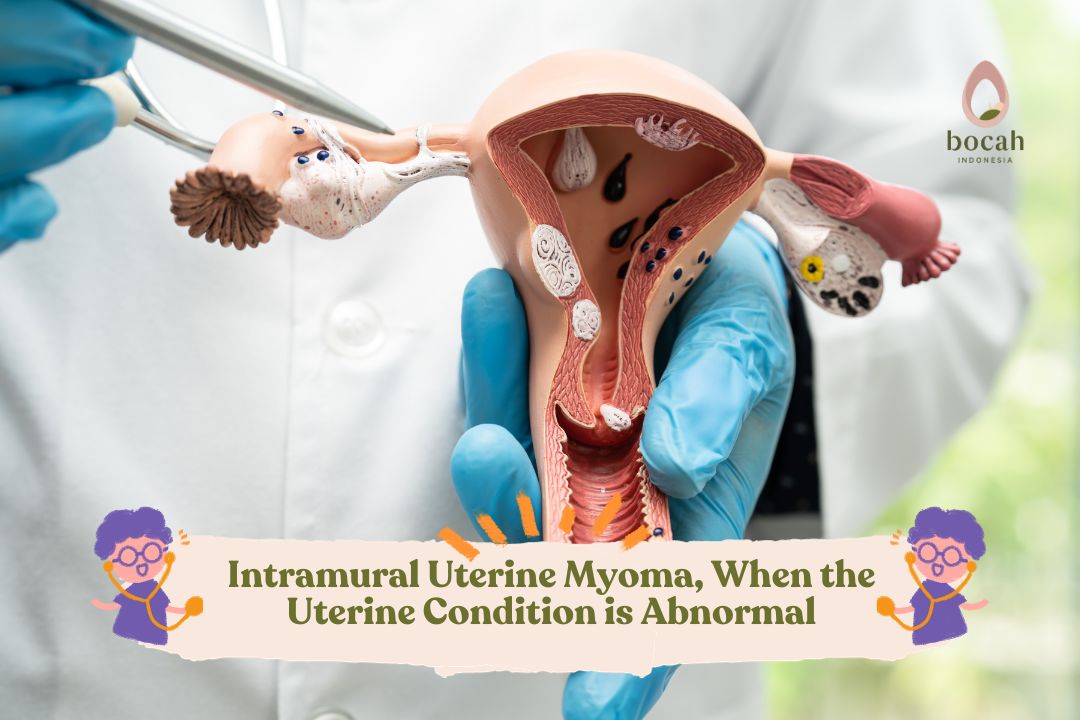Intramural Uterine Fibroids: When the Uterus is Abnormal

Intramural uterine fibroids are a type of uterine fibroids, also known as uterine tumors, that grow within the wall of the uterine muscle (myometrium).
Intramural uterine fibroids can develop in various parts of the uterine wall and can cause various symptoms depending on their size, number, and location. Find out the causes, risks, and appropriate treatments for intramural uterine fibroids here.
What Is Intramural Uterine Fibroids?
Intramural fibroids are the most common type of uterine fibroids. Typically, these fibroids are discovered during routine pelvic examinations and are often diagnosed between the ages of 30 and 40, although these benign tumors can develop at any age.
Intramural fibroids are usually not harmful and do not always cause symptoms. However, they can sometimes pose problems and lead to some disruptive symptoms, including pain during sexual intercourse. Intramural fibroids can also occasionally cause reproductive issues.
Tanya Mincah tentang Promil?
Types of Intramural Uterine Fibroids
All intramural uterine fibroids grow within the uterine wall, among these muscle fibers. Intramural uterine fibroids are classified based on their growth location as follows:
Anterior intramural uterine fibroids grow on the front wall of the uterus.
Posterior intramural uterine fibroids grow on the back wall of the uterus.
Fundal intramural uterine fibroids grow on the top part of the uterus.
Where the fibroids appear can determine their impact on maternal health and the appropriate treatment. For example, intramural uterine fibroids that are large in the lower part of the uterus can affect childbirth through the birth canal.
Symptoms of Intramural Uterine Fibroids
Some people with intramural uterine fibroids and other types of uterine fibroids may not have any symptoms, so the condition is often undiagnosed initially.
About 80% of women have fibroids by the age of 50. However, only 20% to 50% of those with fibroids experience symptoms that require treatment.
Symptoms of intramural uterine fibroids include:
Heavy menstrual bleeding, which may lead to anemia.
Spotting between periods.
Feeling full or heavy in the abdomen.
Pain during sexual intercourse.
Lower back pain.
How Are Intramural Uterine Fibroids Treated?
Not all fibroid sufferers require treatment. Fibroids are not cancerous, and if they do not cause symptoms, serious treatment is not necessary.
However, if the fibroids cause pain, heavy menstruation, or infertility, consult with a doctor about the appropriate treatment for intramural uterine fibroids, especially if you are considering conceiving. Here are some treatments for intramural uterine fibroids:
Non-Surgical Treatment
Some treatments aim to control fibroid symptoms. This may include the use of hormonal contraceptives to reduce heavy menstruation or pain.
If symptoms are severe, you may be directed to undergo non-surgical procedural treatments, including:
Uterine fibroid embolization (UFE), a procedure that stops blood flow to the fibroids, causing them to shrink or disappear.
Myolysis, a procedure that uses focused ultrasound to destroy fibroids.
Medication Consumption
Agonists of Gonadotropin-releasing Hormone (GnRH) are drugs that induce a state similar to menopause in the body. This can make fibroids smaller, although the effect only lasts while taking the medication.
Agonists of GnRH can have side effects such as:
Hot flashes (sudden sensations of heat)
Fatigue
Weight gain
Bone loss
Worsening metabolic conditions such as diabetes
Due to these side effects, GnRH agonists are usually used short-term. This medication is also often given before surgery to help reduce the duration of the procedure and time in the hospital.
Lifestyle Changes
Reducing stress, maintaining a healthy weight, and limiting the consumption of red meat and soy can help prevent the development of fibroids.
Surgical Treatment
Intramural uterine fibroids can sometimes be challenging to treat with non-surgical options. Therefore, surgery is the best choice for some patients. The most common procedure is myomectomy.
This operation can be performed either laparoscopically (through small incisions) or with a full incision to remove the fibroids while preserving the uterus. It is intended as an alternative to hysterectomy, a procedure to remove the uterus. Hysterectomy is another option for treating fibroids.
Overall, intramural uterine fibroids are not harmful, although they can cause unpleasant symptoms such as heavy menstruation and difficulty getting pregnant. There are many treatment options available; discuss with your doctor the appropriate care for managing the condition of intramural uterine fibroids you are experiencing. If you are planning a pregnancy, it is advisable to consult first regarding the treatment and care that will be undertaken.
Source:
- Wu, G. et al. (2020). A Comparison of the Pregnancy Outcomes Between Ultrasound-Guided High-Intensity Focused Ultrasound Ablation and Laparoscopic Myomectomy for Uterine Fibroids: A Comparative Study. International Journal of Hyperthermia, 37(1), pp. 617–23. https://pubmed.ncbi.nlm.nih.gov/32525708/
- Sohn, G. et al. (2018). Current Medical Treatment of Uterine Fibroids. Obstetrics & Gynecology Science, 61(2), pp. 192–201. https://www.hindawi.com/journals/ogi/
- Cleveland Clinic (2020). Disease & Conditions. Uterine Fibroids.
- Mayo Clinic (2021). Diseases & Conditions. Uterine Fibroids.
- Mutch, D. & Biest, S. MSD Manual (Revised 2023). Uterine Fibroids.




One Response
First and foremost, congratulations on bringing down such a complicated issue into something simple and relevant. Your writing style is really approachable; it’s like talking to a knowledgeable friend rather than reading a medical publication.